Make your own homemade fermented probiotic drink!
In Mexico we have a drink called Yakult. I don't know if they have it in other countries or if it has a different name. This drink contains a lot of micro organisms that are beneficial for your health, such as Lactobacillus which is really beneficial for your intestinal flora.

Here you can see the fermented kefir drink.
I am currently studying biotechnology in the Querétaro campus at Monterrey Institute of Technology. We have a class called bioprocess laboratory, in which we look at industrial processes for the making of food, drink, medicine and whatever else they think of. In this years project, we will work with milk kefir, so I gave myself the task of buying it to incorporate it into my daily diet, since I have digestive problems and turned to it for a natural kind of help, which is always healthier and cheaper than medicines.
But what is kefir?
Kefir is a Turkish word meaning "nice taste" or "blessing" (and I can already see why! ). Kefir originates from Caucasian countries, although now it can be found all over the world. A lot of people know it by different names, there are some that call it Bulgarian water or Bulgarian milk, which are those that use it to make Bulgarian yoghurt. Other people call it bulgaricus, tibicos, or tibetan mushrooms and many others know it as kefir.
Kefir is a mix of bacteria and fungi which coexist harmonically, forming colonies that resemble grains of salt but 3-5 times bigger and transparent in colour. You would think that they would be slimy (by the pictures) but they are actually dry and a little hard. The mass that it is wrapped up in, is called kefiran and it doesn't just have probiotic and yeast bacterium but also lipids, vitamins and a lot of proteins.
What is a fermented drink with kefir like?
One of the things that I like the most about kefir is that anyone can make it at home, because it is quite easy, fast and economic. Kefir contains lactic acid bacterium, which your metabolism needs as a source of energy (sugar, unrefined brown sugar, fruit) and are going to be used to start your metabolic route in which it will produce ethanol (alcohol in low imperceptible amounts), carbon dioxide and lactic acid (which benefits the body). Due to the production of carbon dioxide, you can make a kefir soda if submitted to a second fermentation, so you can also make your own natural soda that is very beneficial for you intestinal flora.
The final drink has a rich taste, it is quite sweet and its colour is very similar to apple cider vinegar so there is nothing really disgusting about this process, since it is all natural.
How to make kefir?
The first thing that you have to do is to get kefir grains or kefiran, which is the same. Traditionally they say that you should give it as a gift because it is so good for the body that people give it for good luck and as a a symbol of true appreciation. If you don't find someone to give you it as a gift, because honestly it is not very common, you can order it on the internet.
I order it from a page called Mercadolibre, there you will be able to find the deactivated or activated grains. The deactivated grains come dry, like salt and you have to activate it with water and natural organic sugar or cane. While they are activating in water, they already start to look normal, and spongy. The ones that I ordered came activated and in a jar, and since they arrived in a parcel and a few days late, I had to put them into water immediately. If you want to import them to another country, they probably won't send you them due to problems at customs involving living organisms, so buy them from someone who lives in the same state or province as you, or at least in the same country. The most likely option is that you order them activated, so you have to continue on with the following steps of making your kefir water.
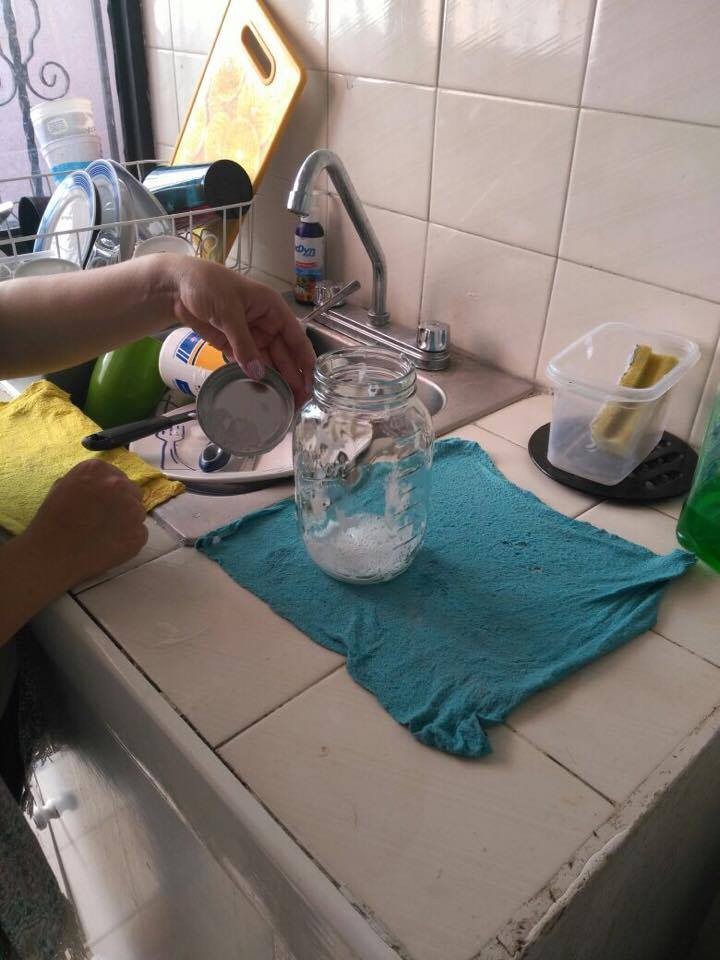
First of all, wash the container that you are going to keep it in well, also remember that it should be glass.
- Filter the water
- Change the water
- Mix the water with the tibicos
- Cover the pot
- Wait a few hours
- Sweeten it to your taste
With a sieve and a glass underneath it, empty the jar that contains the kefir and water. The water will fall into the glass while the kefir will stay trapped in the sieve. Caution: This cannot be metal because it will damage the tibicos, it needs to be plastic.

The water is in the glass.
Keep the tibicos in the colander while you fill the glass with water. The recommended proportion is five cups of water and 6 tablespoons of sugar. Remember that in the end, the sugar will use the tibicos to break it down in its metabolic route, it will not necessarily be a sugar that will go into your body, although it is important that you don't add more sugar than you can eat so that your drink ends up sickly sweet (that happened to me the first time). I reccomend that you heat a little fraction of water to help dissolve the sugar. Another thing, the container that you make it in should be glass, so I recommend that you use something like a Mason Jar that they put tapas in, those are excellent.
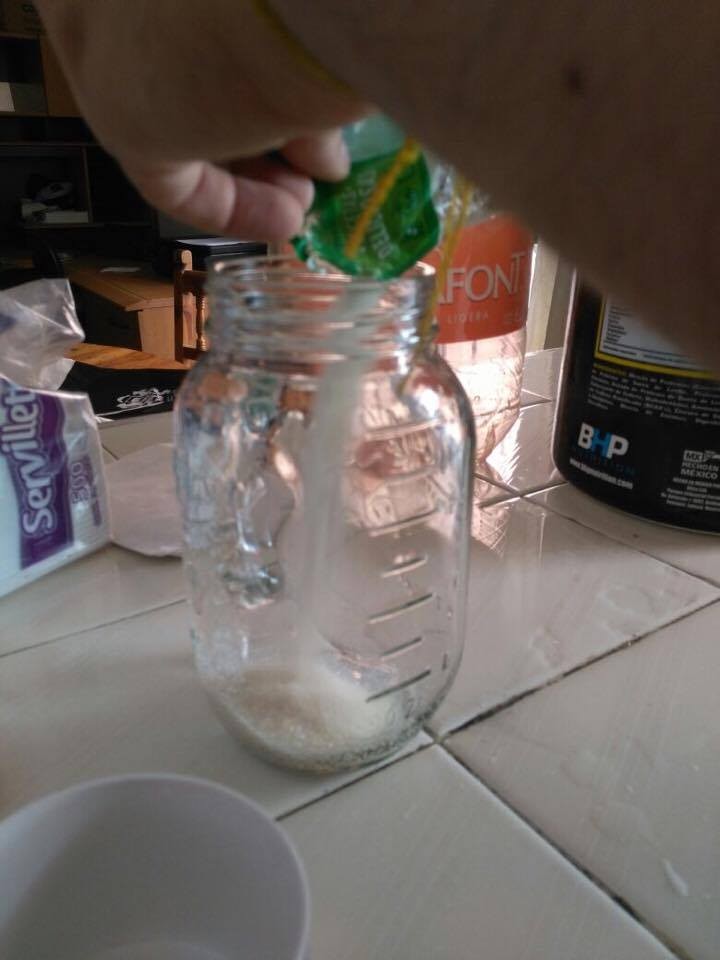
We use cane sugar, which is the most recommended.
Once the sugar is dissolved and the water is room temperature, you can put the strained tibicos in the colander.
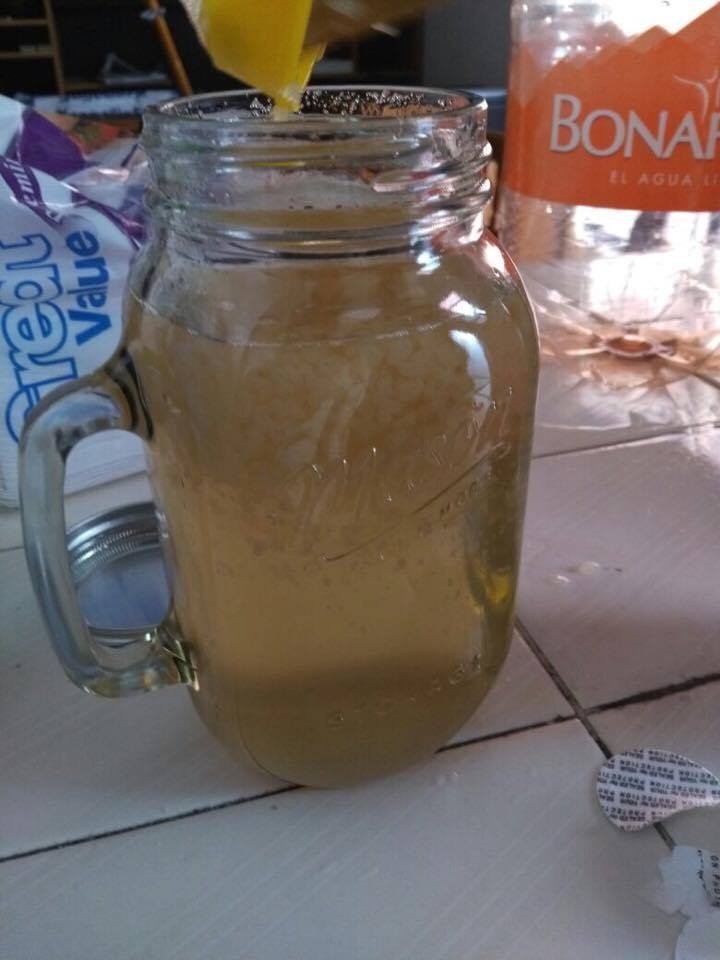
At the start, the tibicos will stay on top but as they absorb the water they will go down. After a few days, they are going to start to rise because the grains will accumulate CO2 which makes the do this.
The reaction is carried out in absence of oxygen and at room temperature which is why it is necessary that the container is well covered.

Remember to close the container, but not too tightly.
After 24 hours you can already make out a slight smell of apple cider vinegar, but now you decide how long you want to wait, depending on how well you know it. Some leave it fermenting for one day, while others like to leave it fermenting for longer. In theory, for milk kefir, people leave it to ferment for five days, it will be your decision.
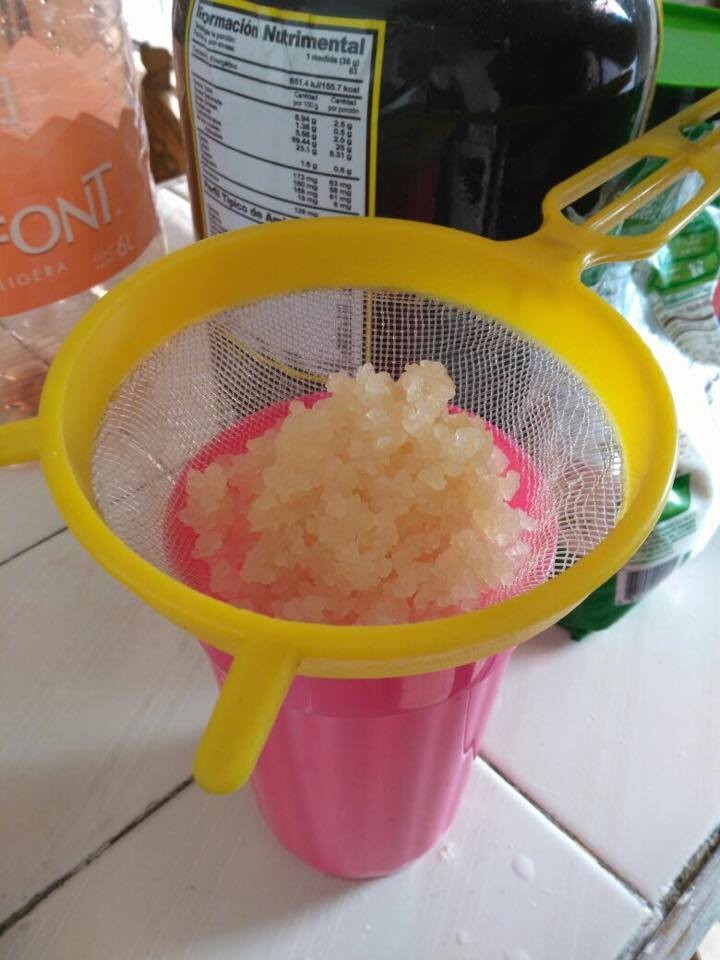
Once the period is finished, use the colander again and we will use the water that is still in the container. We have to repeat all of the steps and put the rest of the kefir that is in the colander into clean water with sugar.
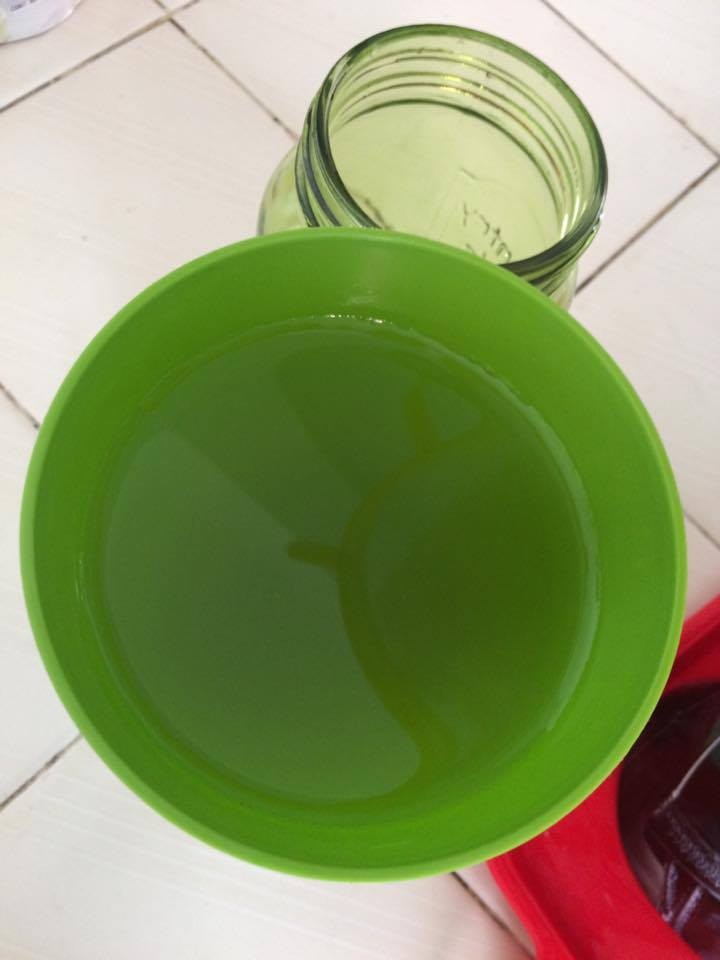
The water is going to turn a dark yellowish colour, that is normal. As days pass, it will become less transparent.
Since it is ready you can sweeten it as you like. Some people like to drink it directly from the container but I like to put it into natural juice and in fact, I have also mixed it with water. One of the ways that it is most enjoyed is by cutting fruit and leaving it in a container for a few hours, so I recommend cutting a few strawberries, putting them in a mason jar and leaving them to stand for a few hours, this way they taste really delicious. Remember that you can keep kefir water in the fridge for approximately 4 days and it is still equally as delicious.
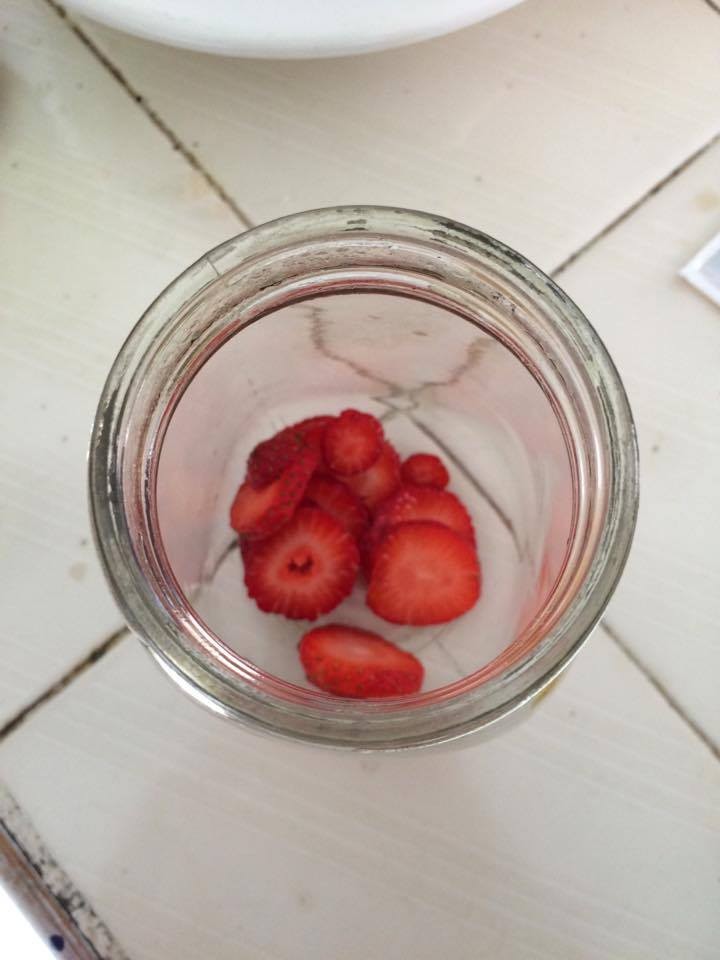
I decided to cut three or four strawberries in slices and putting them in the Mason Jar where I keep my kefir drink.

After putting the strawberries in, I add the kefir water that was in the pink glass.
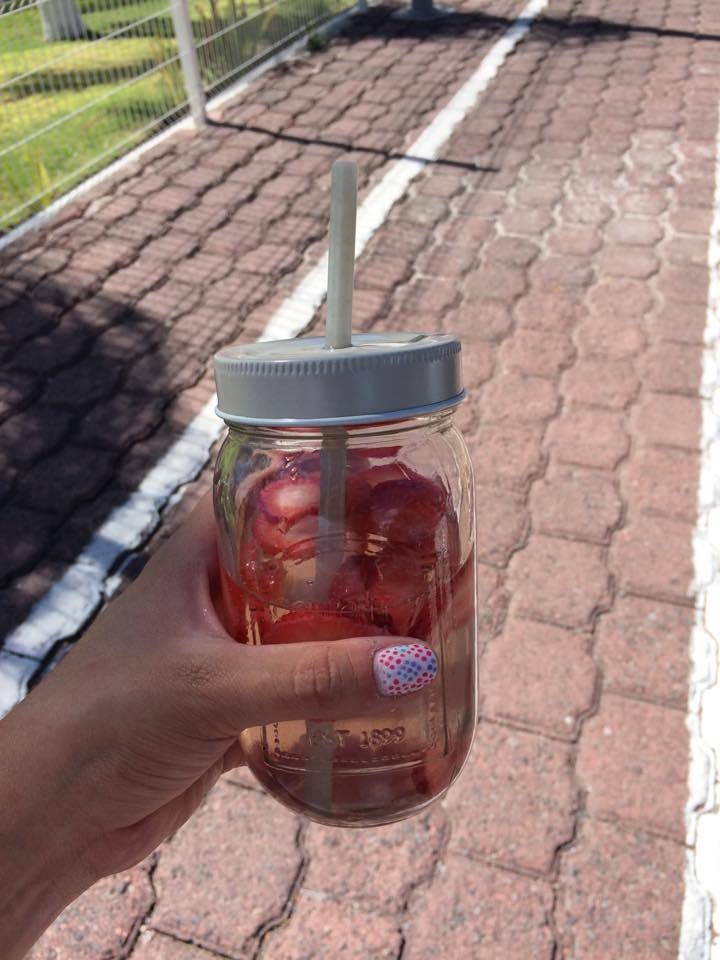
After taking it out of the fridge, you can see how the colour of the drink has changed a little more pink, and the taste is more concentrated in strawberry. You can use it as a home made probiotic drink, strawberry with a nice taste to take with you to school any day.
Do you want to make kefir soda?
One thing that people like the most about kefir is that you can make a natural and healthy drink. The CO2 that the kefirs metabolic route produces, makes the drink carbonates, however for this to happen you have to be a little more patient and wait for a second fermentation (a few more days).
Since you have made your kefir in the previous steps, you are going to add it to a juice that you like, I recommend that it is as natural as possible. Add a little kefir water to a bottle (1/3) and 1/3 of your preferred natural juice. The other third, you will leave as space for the carbon dioxide, if you think of what happens when you shake a bottle of soda a lot and then open it (and we definitely don't want that).
I recommend that you buy a bottle similar to a bottle of beer, that is glass but not disposable. This way you can take the lid on and off, and above all you can reuse it as many times as you want. But anyway, once you fill the bottle, leave it to stand at room temperature (without opening it at all) for a few more days, so it can produce a lot of carbon dioxide and your drink will be like soda in a few days. Once it is finished, you can put it in the fridge to preserve it and it will be refreshing when it comes to serving it.
What do I do if I am going on a trip?
Remember that the grains of kefir are living although they don't seem it, so they are like pets that you have to feed almost every day (depending on you) and change the water. If you decide to go on a trip, you can leave them in the fridge for four or five days and nothing will happen.
Continue the tradition and give kefir as a gift!
Your kefir grains are going to grow by almost 10% each day, so within a few weeks you will have so many grains of kefir, almost double or triple what you had at the start. If you want to continue the tradition, give it as a gift to someone who needs it and who wants to take care of their intestinal health, it is going to be a great gift. If you don't have someone to give them to, you can throw them out but I don't really recommend it because it can have environmental implications that we cant even imagine, I never throw food in the bin.
Photo gallery
Content available in other languages
Want to have your own Erasmus blog?
If you are experiencing living abroad, you're an avid traveller or want to promote the city where you live... create your own blog and share your adventures!
I want to create my Erasmus blog! →















Comments (0 comments)